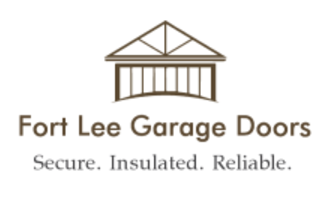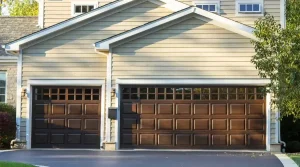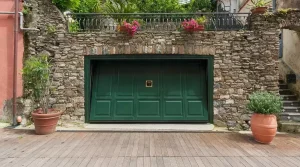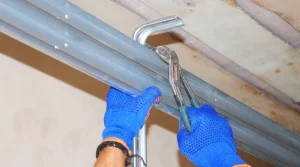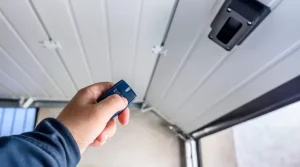Whenever was the last time you thought about your garage door springs? Have you ever thought about the potential that they have a shelf life and need periodic maintenance and replacement? Most individuals will say no to one or both of those questions.
Garage door springs are only on everyone’s attention once they cause a visible or audible problem. Your garage door is integral to any house, whether used seldom or often. Continue reading this guide on damaged garage door springs to learn about preventive maintenance, repair, indicators of wear and tear, normal life spans of door springs and more.
Types of Garage Door Springs
There are two garage door springs to pick from, but which is best for you? First and foremost, what precisely are garage door springs? They are responsible for your garage door’s ability to open and shut. Because the direct usage of garage door springs smooths the operation of the door, knowledge of the distinctions between the two types of springs available is essential.
Extension Spring
These springs expand and stretch to create movement with the garage door. Garage doors typically contain two extension springs on each side of the gate parallel to the track. They expand when the door is closed and retract when the door is open, using pulleys and cables to provide movement.
Extension springs are mostly utilized in residential garages. When using extension springs, you must additionally attach safety cords to aid if the cables break. The spring snapping is unusual, but it might happen, so it’s best to be prepared! Within the extension spring style, many alternative cables can be picked from.
Double Looped
Although the double-looped extension spring is more durable than the open-looped one, it is significantly more challenging to repair.
Clipped Ends
This design excels in durability, and the clipped ends alleviate stress from the extension springs during usage, making it the better option for heavy garage doors weighing 200 pounds or more. The disadvantage is that it’s more challenging to replace than other types.
Torsion Spring
The number of torsion springs used to open and shut your garage door is determined by size and weight. There are usually one or two for normal garage doors, while heavier-duty garage doors might have up to four. They are located above the garage door opening. Torsion springs open and shut garage doors by looping around the shaft as the door raises and gathering tension as it closes.
The springs are beneath the closed door when additional stress, which is when most springs fail. If the springs fail while the garage door is open, the door may collapse, thus, follow safety precautions and never go below the door while it is being opened. Torsion springs, like extension springs, come in various shapes and sizes.
Steel-Rolling Door
Steel rolling door alternatives are utilized on rolling doors in commercial buildings.
Torque Master
The torque master is the safest solution for the torsion spring system since the springs are contained in the shaft.
How to Check for Broken Garage Door Springs
The first clue that your garage door has a faulty spring is that it begins to work abnormally. The garage door will have difficulty opening and closing appropriately, and if the springs are detached, you may see them wobbling. Having a broken garage door spring is if the garage door is bowed. Because the spring is not holding the average weight, the garage door takes on more weight than it is designed to bear. While you lift the door while the springs are not working, the increased weight causes the door to stretch outward.
You will also notice variations in how the garage door shuts when the spring is not appropriately bearing the garage door’s weight. The door will close quicker than planned and may move slower. The last visible indicator of damaged springs or springs not operating properly is that nothing occurs when you attempt to open the door with the emergency rope.
Why Do Garage Door Springs Break?
The most obvious reason garage door springs fail is wear and tear. Garage door springs have a designed set of cycles. A garage door cycle is shown by moving up and then down. The springs have a 10,000 cycle rating. At first glance, it could appear excessive, yet it rapidly adds up when you consider how often you use the garage door each year.
For instance, suppose you leave your vehicle parked in the garage; you will do at least two daily cycles. Errands, children playing in the driveway with the garage door open, your spouse using the vehicle for their requirements, or even having two cars add daily cycles. Some houses utilize the garage as their front entrance, which greatly increases the cycles, and the 10,000 cycles are suddenly gone before the normal period of 5-7 years.
Rust
When rust begins to grow in the spring, its lifetime is significantly reduced. Rust increases the friction caused by the coils when expanding and retracting during cycles. The rate of failure rises as corrosion increases. A few times a year, lubricating the springs with a silicone-based lubricant helps extend their life and smooth the cycles.
Improper Maintenance
Proper maintenance can assist extend the life of the springs and provide insight into when they begin to fail. All springs will ultimately fail, but keeping them lubricated, cleaned, and properly cared for can extend their life. Another assignment that should be completed periodically is checking the garage door balance. Because of the cold and stress paired with higher moisture in the air, winter is a classic season for spring failure. To check the balance, do the following steps:
- First, To begin, pull the emergency cord to put the door in manual mode.
- Next, Lift the door halfway and then let go. If the springs are in excellent shape, they will keep the door closed. Alternatively, the springs deteriorate if the door sags or collapses and must be adjusted or replaced.
How to Replace Garage Door Springs
While you can obtain components to replace damaged garage door springs online or at hardware shops, it may be risky. When replacing your springs, it is always best to get professional assistance. Changing the two primary kinds of springs on your own might pose several risks to your garage door.
Extension Spring Replacement
Even while extension springs are easy to repair, risks are still involved. The garage door might collapse on you or another person, or you could cut yourself on the corroded old metal springs.
Some people go to Lowe’s, Home Depot, or other home improvement shops and purchase the largest spring they can find, hoping it would last longer, but larger isn’t necessarily better. The weight of your garage door should be considered when purchasing extension springs. If you choose a more giant extension spring than you need, your garage door may fly up fast when you open it, making it difficult to shut. This problem may cause significant damage to your springs, necessitating extra repairs.
You should obtain extension springs from a licensed garage dealer rather than doing it yourself. That way, you may be confident that you have the correct-sized spring for the weight of your door. With the proper extension spring, your garage door will be easy to open and shut.
Torsion Spring Replacement
Torsion springs have a lot of stress, which may lead to many problems if you try to change them independently. Because the metal is so tensile, there is a significant chance of metal shooting out of a component if anything snaps or breaks during the repair. Along with the possibility of flying metal, you might also suffer cuts from corroded metal, or the garage door could collapse on someone, among other things.
Professional Replacement
To avoid threats to yourself or others, you should use specialists to repair or replace your garage door springs. Any attempt to conduct repairs or replacements on your own offers a severe risk of serious harm.
Many homeowners need to be aware of how simple it is to have a professional come to their house to replace the springs and instead try to do it themselves. It’s great to take care of your property and solve problems as they arise, but in some instances, such as with garage door springs, you’ll be better off hiring a professional.
Is It Safe to Open a Garage Door With Broken Springs?
You should make advantage of your garage if you have one. Door opener, it is still safe to use it to open your garage door if a spring is not performing properly. It is unsafe to open the garage door even with an opener. Attempting to open the door with your opener might result in various problems.
- The door panels can fall apart.
- You might strip the gears in the garage door opener.
- The opener’s motor may burn out.
- The rails may sag.
- As the motor works harder to open the door, parts of the opener carriage may break off.
- Although it is uncommon, there have been reports of the opener pulling itself from the ceiling, resulting in further damage and other possible concerns.
If your garage door springs aren’t performing correctly, don’t try to open it. Even if you don’t have a garage opener, you might need more support depending on your sort of spring system. Without the assistance of the spring system, you would have to raise the weight of a garage door, which may weigh up to 500 pounds. It will be challenging and taxing on your body. You might injure your back or legs, or the garage door could collapse and inflict more injury.
You may open your garage door if a single spring is still working, but it is not suggested to do so regularly. It will be tough to open the door, and the possibility of injury remains. If someone is attempting to back their vehicle out of the garage, you may use your garage opener to help securely open the door. Even if one of your springs is intact, use care while opening your garage door to avoid damage or injury.
If it’s necessary to use the garage, numerous methods exist to open the door without using the opener. These tips can help you reduce the hazards of opening a damaged garage door.
- Have someone assist you in lifting the door.
- Ensure you take basic back precautions and don’t let the door fall on your fingers or feet.
- Disengage the door by tugging the rope attached to the J-arm until the mechanism releases. Remember that before your springs broke, you needed both the opener motor and the springs to open the garage door, so proceed cautiously while lifting the hefty door!
- Lift the door until it rests on the horizontal rails, then gently remove your hands to ensure it stays in place.
Remember not to push the door open since you will distort the panels. Lift the door evenly with a companion to prevent bending the panels. To shut the door, repeat the procedures, but with the weight coming down, it may be more challenging to regulate the garage door closing so that it does not fall too quickly and destroy additional pieces along the way or injure someone.
We Can Help You With Your Garage Door Springs
Fort Lee Garage Doors Service is ready to help whether you need springs changed on a business or residential garage door. any of your garage door needs, including openers, repairs, preventive maintenance, and more. Please contact Fort Lee Garage Doors online or call us at 201-800-6757 to arrange a repair.
